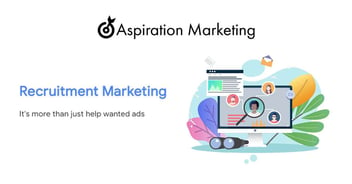Building a Talent Pipeline: Proactive Recruitment Strategies
Ever find your team stretched thin, scrambling to onboard new hires just as critical projects ramp up? What if you could sidestep that constant pressure? Building a talent pipeline offers a strategic advantage, allowing you to connect with potential candidates before urgent needs arise.
This approach moves beyond simply filling vacancies to cultivating relationships with individuals who possess the skills your company will need in the future. After all, why wait until a role opens to start your search?
The Proactive Advantage in Talent Acquisition
So, what exactly is this "talent pipeline" we're talking about? Think of it as a proactive system for identifying, engaging, and nurturing relationships with potential future employees. It's about building connections with skilled individuals who align with your company's values and needs, even if they aren't actively browsing job boards today. This isn't about filling immediate openings; it's a long-term strategy focused on ensuring a steady stream of qualified candidates is available when you have a need.
Contrast this with the more traditional, reactive approach to recruitment. When a position becomes vacant, the scramble begins: job descriptions are written, applications are reviewed, and interviews are conducted under pressure. This urgency often leads to significant time constraints. The pressure to fill the role quickly can result in rushed hiring decisions, potentially leading to less-than-ideal candidates being brought on board.
Furthermore, relying solely on active job seekers means you're likely missing out on a significant pool of talent–those who are happily employed but might be open to the right opportunity if it were presented to them. Top-tier professionals are often passive candidates; they aren't actively looking because they are already valued in their current roles.
This is where the benefits of proactive recruitment marketing become clear:
-
By building a talent pipeline, you position yourself to secure top talent in a competitive market. You're not just competing for the actively unemployed; you're cultivating relationships with high-performing individuals who could be a perfect fit for your organization down the line.
-
A well-nurtured pipeline significantly reduces both time-to-hire and cost-per-hire. When a vacancy arises, you already have a pool of engaged candidates familiar with your company, streamlining the hiring process.
-
Proactive engagement often leads to improved quality of hires. By taking the time to build relationships and assess candidates over time, you gain a better understanding of their skills and cultural fit.
-
Finally, a talent pipeline strengthens your long-term workforce planning.
By anticipating future needs and proactively engaging potential candidates, you can build a workforce ready to meet your business's evolving demands. Research indicates that companies with strong talent pipelines can experience a 15-20% reduction in time-to-hire.
1. Understanding Your Talent Needs and Employer Brand
Ideal Candidate Profiles
Before you can effectively build a talent pipeline, you need a clear understanding of who you're trying to attract and why they would want to work for your organization. This involves laying a solid foundation by defining your ideal candidate profiles and understanding the power of your employer brand.
Defining ideal candidate profiles goes beyond simply listing the requirements for current open positions. It requires a forward-thinking approach, anticipating the skills and expertise your company will need not just today, but in the coming 3 to 5 years, considering potential growth areas and strategic shifts.
For instance, instead of merely seeking a "Sales Manager," a proactive approach would define the specific skills and experience required for that role in the context of the company's future sales objectives. This might include expertise in specific digital marketing channels, data analytics capabilities, or experience leading cross-functional teams, depending on where the company envisions its sales efforts. This detailed understanding ensures your talent pipeline is populated with individuals who can contribute to your long-term success.
Employer Branding
Equally critical is the cultivation of a strong employer brand. Your employer brand is essentially how your company is perceived as an employer–its culture, values, and employee experience. In today's competitive talent landscape, a positive employer brand is a significant draw, particularly for passive candidates. These individuals are often content in their current roles but might be swayed by an organization with a compelling reputation. I
A recent study revealed that approximately 84% of candidates say a company's brand reputation is a key factor in their job search. Think of companies renowned for their innovative cultures or commitment to employee growth; they often receive unsolicited applications simply because their employer brand resonates with top talent.
Recruitment Marketing
Finally, it's crucial to ensure that your employer branding efforts are seamlessly integrated into your recruitment marketing strategies. The messages you convey about your company culture, values, and employee experience should be consistent across all platforms–your website, social media, job postings, and employee communications. This consistent messaging reinforces your employer brand and builds trust with potential candidates, making your company a more attractive option when they do consider a career change.
2. Identifying and Engaging Passive Candidates: Untapped Talent
With a strong understanding of your ideal candidates and a compelling employer brand in place, the next step is to actively seek out and engage those individuals who aren't actively job searching–the passive candidates. This requires a strategic approach to identify where this untapped talent pool resides and how to initiate meaningful connections.
Networking Platforms
Professional networking platforms like LinkedIn are invaluable tools in this endeavor. They offer a vast database of professionals with detailed profiles outlining their skills, experience, and career interests. Proactive outreach on these platforms goes beyond simply sending connection requests. It involves sharing valuable company insights, engaging in industry discussions within relevant groups, and thoughtfully reaching out to individuals whose profiles align with your future needs.
For example, a company looking for AI specialists might share articles on their advancements in AI or participate in discussions on the future of artificial intelligence, naturally connecting with professionals in that space. Notably, LinkedIn is reported to be the platform where approximately 87% of recruiters find quality candidates.
Industry Events
Industry events and conferences provide excellent opportunities for direct engagement and networking. Sponsoring or attending these events allows your team to interact face-to-face with potential candidates in a less formal setting than a job interview. Actively engaging means participating in discussions, hosting booths where attendees can learn more about your company, and making genuine connections with individuals whose expertise aligns with your future needs.
Online Forums
Online communities and forums that cater to specific professional fields are another rich source of passive talent. These niche platforms allow professionals to connect, share knowledge, and discuss industry trends. By participating in relevant online groups and sharing your company's expertise and insights, you can build relationships with potential candidates who are passionate about their field.
Employee Referrals
Don't overlook the power of your internal network through employee referrals. Your current employees often know talented individuals in their professional circles who might not be actively looking for a new job but could be a great fit for your company. Incentivizing referrals can be a highly effective way to tap into this passive talent pool.
Referred candidates often have a better understanding of the company culture and tend to have a higher retention rate. Studies show that referred candidates boast a 45% higher retention rate compared to candidates from other sources.
Company Website
Finally, your company website and social media channels play a crucial role in passively engaging potential candidates. By consistently showcasing your company culture, values, and career growth opportunities, you can attract individuals who are aligned with your mission, even if they aren't actively seeking a job. Featuring employee testimonials, behind-the-scenes content, and information about your company's impact can make your organization more appealing to passive candidates who are exploring their options.
3. Building and Nurturing Relationships for Long-Term Engagement
Identifying passive candidates is just the first step; the real work lies in building and nurturing meaningful relationships with them over time. This long-term engagement strategy is crucial for transforming potential fits into future hires.
Candidate Relationship Management (CRM) System
A foundational element of this strategy is creating a Candidate Relationship Management (CRM) system. Just as sales teams use CRMs to manage leads, a recruitment CRM helps you organize and track your interactions with potential candidates. This system allows you to centralize candidate profiles, record communication history, and set reminders for follow-ups. A key benefit of a CRM is the ability to segment candidates based on their skills, interests, and the types of roles they might be a good fit for in the future.
For example, you could segment candidates with expertise in data science, those interested in leadership positions, or individuals with experience in a specific industry vertical. This segmentation enables more targeted and relevant communication.
Personalized Communication
Moving beyond generic outreach is essential for effective engagement. Personalized communication and engagement involve providing value to potential candidates, rather than simply sending them job alerts. This could involve sharing relevant industry articles, inviting them to exclusive webinars or online events hosted by your company, or congratulating them on professional achievements.
For instance, if you identify a passive candidate with a strong interest in a particular area of your business, sharing a recent company blog post or whitepaper on that topic demonstrates that you're paying attention to their interests and see them as more than just a potential applicant.
Content Marketing
Moving beyond generic outreach is essential for effective engagement. Personalized communication and engagement involve providing value to potential candidates, rather than simply sending them job alerts. This could involve sharing relevant industry articles, inviting them to exclusive webinars or online events hosted by your company, or congratulating them on professional achievements.
If you identify a passive candidate with a strong interest in a particular area of your business, sharing a recent company blog post or whitepaper on that topic demonstrates that you're paying attention to their interests and see them as more than just a potential applicant.
Candidate Experience
Finally, remember that even for passive candidates, creating engaging candidate experiences is vital. Every interaction a potential candidate has with your company, no matter how small, shapes their perception. Prompt and helpful responses to any inquiries, even if there isn't an immediate job opening, demonstrate professionalism and respect.
Providing informative content about your company culture and values, and ensuring a positive and transparent communication process, contributes to a positive candidate experience that can make your company a top-of-mind choice when they do decide to make a career move.
4. Measuring the Success of Your Talent Pipeline
To ensure your proactive recruitment strategies are yielding the desired results, it's crucial to establish key metrics and consistently track the performance of your talent pipeline. Here are some vital metrics to monitor:
-
Number of passive candidates engaged: This tracks the size of your pipeline and the reach of your proactive efforts. It indicates how many potential future employees you are actively connecting with.
-
Conversion rate of passive candidates to hires: This metric measures the effectiveness of your engagement and nurturing strategies. It reflects the percentage of passive candidates in your pipeline who eventually become successful hires.
-
Time-to-hire for roles filled through the pipeline: Compare this to the time-to-hire for traditionally sourced candidates. A well-nurtured pipeline should lead to faster placements when roles open.
-
Cost-per-hire for pipeline hires: Analyze the cost associated with proactively engaging and hiring passive candidates versus the cost of traditional recruitment methods. A strong pipeline can often lead to more cost-effective hires.
-
Quality of hires from the pipeline: Assess the performance and retention rates of individuals hired through your talent pipeline. Higher performance reviews and longer tenures indicate a successful proactive strategy.
Regularly analyzing this data is essential for continuous improvement. By reviewing these metrics, you can identify what's working well and pinpoint areas that need optimization.
For example, a low conversion rate might suggest a need to refine your engagement strategies or the types of passive candidates you are targeting. Tracking time-to-hire and cost-per-hire can demonstrate the tangible benefits of your proactive approach and justify further investment.
Ultimately, a data-driven approach ensures your talent pipeline remains a valuable asset in securing top talent for your organization's future.
Building Your Future: The Power of a Proactive Talent Pipeline
Embracing a proactive approach to recruitment and building a strong talent pipeline offers a significant competitive advantage in today's dynamic market. By identifying, engaging, and nurturing relationships with potential candidates before immediate needs arise, organizations can secure top talent, reduce hiring costs, and improve the overall quality of their workforce.
This long-term strategy not only addresses current hiring challenges but also lays the groundwork for sustained growth and success.
Ready to transform your recruitment strategy from reactive to proactive? Discover how our tailored solutions can help you build a robust talent pipeline that attracts and retains the best talent for your future. Contact us today for a consultation.
This content is also available in:
- Deutsch: Aufbau einer Talent-Pipeline: Proaktive Rekrutierungsstrategien
- Español: Cantera de talentos: Estrategias de contratación proactiva
- Français: Construire un vivier de talents : Stratégies de recrutement proactif
- Italiano: Costruire una pipeline di talenti: Strategie di reclutamento proattive
- Română: Construirea unei baze de talente: Strategii proactive de recrutare
- 简体中文: 建立人才梯队:积极主动的招聘策略

Claudia, a People Operations leader with 9+ years of experience in HR strategy, employer branding, and employee engagement, has guided human resources functions for several high-growth international companies. She played a key role in developing the global employer branding strategy at UiPath during its critical expansion phase. Claudia's expertise lies in scaling People Operations and building the essential HR frameworks that enable dynamic companies to grow effectively.






%20(1)-1.jpg?width=352&name=melanie-deziel-U33fHryBYBU-unsplash%20(2)%20(1)-1.jpg)


Leave a Comment